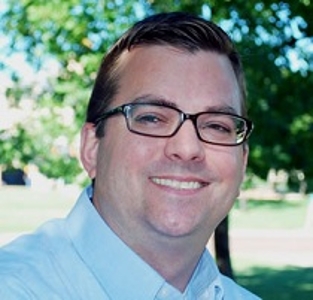
Contextualizing the Pandemic

UC Irvine Historian Andrew R. Highsmith is a specialist in modern U.S. history with particular interests in metropolitan development, public policy, racial and economic inequalities, and public health. In July, we asked Professor Highsmith to share his perspective about how to help students put the current pandemic into historical context. This interview originally appeared in our Teaching in 2020 issue of The Source.
How has the pandemic and related crises impacted your own work and teaching? The COVID-19 crisis has had a tremendous impact on my work as a professor. Due to a sabbatical earlier this year, I have not taught any classes since the pandemic started. However, my research output has declined significantly since March. My wife is a primary care physician who sees sick patients, including those with COVID-19, so she made the difficult decision to live apart from our family during this time. While our three children and I are extremely proud of the life-saving work she is doing, we also miss her very much and worry about her constantly. In addition, her absence has left me as the sole caregiver in our home. Although I try to read and write when I can, it has been a major challenge to do so. The COVID-19 crisis has also changed the way I work with student advisees. Whereas I once saw students in person in my office on a regular basis, I now work with them remotely via Zoom and other platforms. My students are struggling with the changes, too.
How can teachers and students of history use the lens of public health when studying the past? Teachers and students can and should use public health as a lens for viewing history. In my own scholarship, I incorporate public health disparities to illustrate broader patterns of inequality in modern America. But there are numerous other ways in which teachers and students can include public health in their teaching and learning. For example, teachers could use public health initiatives from the early twentieth century to introduce students to the reform ethos of the Progressive Era. Teachers could also highlight the health-related demands of civil rights activists during the 1950s and 1960s to explore the deep historical roots of the Black Lives Matter movement. The possibilities are virtually endless.
Can you provide us with an example of how community health influenced the way events unfolded in history? My favorite example comes from the influenza pandemic of 1918–19. During that health crisis, cities took vastly different approaches. City leaders in Philadelphia, for example, initially failed to impose social distancing measures and, as a result, suffered some of the highest infection and death rates in the nation. By contrast, officials in cities such as Seattle and St. Louis imposed physical distancing and other measures. They closed schools, banned spitting in public areas, and mandated the wearing of masks, to cite just a few examples. And, as a result, they posted some of the lowest death rates in the country. Things like mask wearing and remaining at home as much as possible can help to “flatten the curve.” And we have historical evidence to back it up.
How is it that different communities, even ones geographically close to one another, can have such different health outcomes? This has a lot to do with persistent inequality in American society. In New York City, for example, COVID-19 fatalities in the Bronx have far surpassed those in Manhattan, even though Manhattan has a larger population. Because Manhattan residents are wealthier, on average, they have more options to protect themselves. As the crisis engulfed New York City, many Manhattan residents left the city altogether. Others had the privilege of working from home. In the Bronx, however, which is significantly poorer, fewer residents had such options available.
Race also plays a significant role. For example, in recent weeks, historians have begun to trace the correlation between past mortgage redlining practices and the spread of coronavirus, and the results are revealing. We now know that communities of color that suffered from redlining are also some of the nation’s major hot spots. And the correlation is not by accident. Redlining resulted in massive disinvestment as well as housing dilapidation and overcrowding—the kinds of conditions that allow infectious diseases to spread. We also know that employment discrimination has meant that large numbers of Black and Brown workers now work in public facing jobs that cannot be done from home. Likewise, it is now apparent that mass incarceration has resulted in significant racial and class disparities related to COVID-19.
Sadly, this kind of deeper historical thinking about inequality has been in short supply among our nation’s leaders during the current crisis. But it is absolutely essential to incorporate historical thinking if we want to understand some of the fundamental causes of COVID-19 disparities.
If students want to do something about health inequities in their communities or elsewhere, what can they do now? Or what can they plan to do as adults? Students have a vital role to play in improving the world. This is one of the central lessons of the civil rights movement. Many of the movement’s leaders were young people, including high school and even elementary school students. Their activism and bravery helped to change the world for the better.
One specific thing that the students of today can do is see the connections between COVID-19 disparities and the recent Black Lives Matter protests. Disparities related to COVID-19 and state-sanctioned violence against Black and Brown communities are two sides of the same racist coin. If students can make those kinds of connections, then they can begin to envision and mobilize a broad-based movement for social justice. That work will not be easy, of course, but it is absolutely vital to creating a better world.
